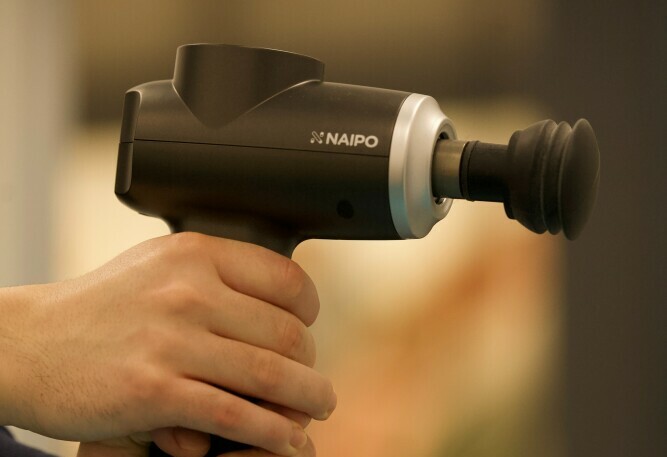Have you ever experienced muscle soreness after exercising? Of course you have! It’s a very common side effect of working out. Soreness that lasts for too long isn’t good, but there’s certainly nothing to worry about if you feel sore for a day or two after a workout. Sometimes, it can even be a satisfying sign that the work you’re putting in is having a real effect on your body.
Being sore, however, can definitely negatively impact other areas of your life, whether it be when performing certain everyday movements and activities or just constantly experiencing discomfort. Although there’s nothing that can fully guarantee you won’t experience this aching after exercise, there are a variety of things you can do to at least minimize its impact or help your body get over it faster.
Let Your Body Cool Down
An important part of your gym routine is warming up beforehand and cooling down afterwards. I’ve previously discussed why you should properly warm up before working out, but cooling down after your training session is also advantageous as it can make your recovery a lot smoother.
Doing static stretches during your warmup could potentially limit the effectiveness of your workout, but doing them at the end of your training can help release tension that may have built up during the workout.
Something else you can do during your cool down is use a foam roller. It’s another way to loosen your muscles, but the pressure from a foam roller can be used to more specifically target parts of your body that feel especially tight.
Massage Your Muscles

On the topic of muscle relaxation, massaging your muscles after working them out is another great way to reduce potential soreness, since it’s very good for pinpointing and eliminating knots and tight areas in your muscles.
This may mean going to a massage parlor every now and then, but the best way to do this is on a daily basis is to apply a massage gun to your muscles soon after a workout. Loosening up your muscles right away will prevent tension from building up and causing intense aching the next day. Besides, if a muscle is already sore, getting a massage probably won’t be a very enjoyable experience.
Power Your Body with Protein
While eating protein won’t directly reduce your post-workout soreness, it’s vital to the muscle recovery process because muscles need protein to repair themselves. If you want your muscles to properly and efficiently recover, you need to supply them with enough protein on a constant basis. In most cases, this means a daily intake of between 0.7-1 grams of protein per pound of body weight.
Otherwise, without adequate protein, not only can symptoms of recovery like soreness be prolonged, but you won’t be able to fully capitalize on the process and achieve muscle growth. Remember, strength training is necessary for building muscle, but it’s far from being the only thing you need.
Give Yourself Rest
The last thing you should do is try to train a muscle while it’s sore. Soreness is a sign that your muscle is still in the repairing process, so working that muscle out would only impede recovery and hurt muscle growth in the long run.
Instead, focus on giving your muscles enough time to rest. What some may not realize is that rest plays a critical role in developing muscle, since this is when the muscle completes the recovery process and achieves hypertrophy. Generally speaking, muscles usually require at least 2-3 days of rest before they’re ready to be trained again. However, you should take additional rest for a particular muscle if it continues to experience soreness after that.
Furthermore, you should incorporate full rest days into your routine to make sure all of your muscles have a chance to fully recover and that you don’t accidentally overwork any muscles. On rest days, you can refrain from strength training, but that doesn’t necessarily mean you can’t perform any physical activity. Doing light cardio on your rest days may actually help with muscle recovery as opposed to not doing anything.
How to Prevent Prolonged Soreness
As I mentioned in the beginning, short periods of muscle soreness following a workout are to be expected, and you can’t ever completely prevent them. Soreness that persists for more than a few days, however, could be a sign that you’ve exerted a muscle too hard, which can be a detriment to your long-term progress.

To avoid overexerting your muscles, you need to build up your training tolerance. This applies in a variety of contexts, whether you’re new to performing a certain exercise or new to working out in general.
If you’re new to a specific exercise, don’t worry about immediately getting to the heaviest weight possible. Learn the correct form, get acclimated to how the exercise trains a particular muscle, and see how it impacts your muscle’s recovery. As your muscle gets used to performing the exercise, you can focus more on increasing the weight and maximizing muscle exertion.
If you’re new to working out, you shouldn’t focus on working your muscles out to the fullest right away as they need to simply adapt to being exerted in the first place. Train so that you’re effectively targeting your muscles, but not expending all of your capacity. The concept of training to or close to failure should only apply once you’ve spent some time in the gym and your muscles have grown accustomed to consistent training.

